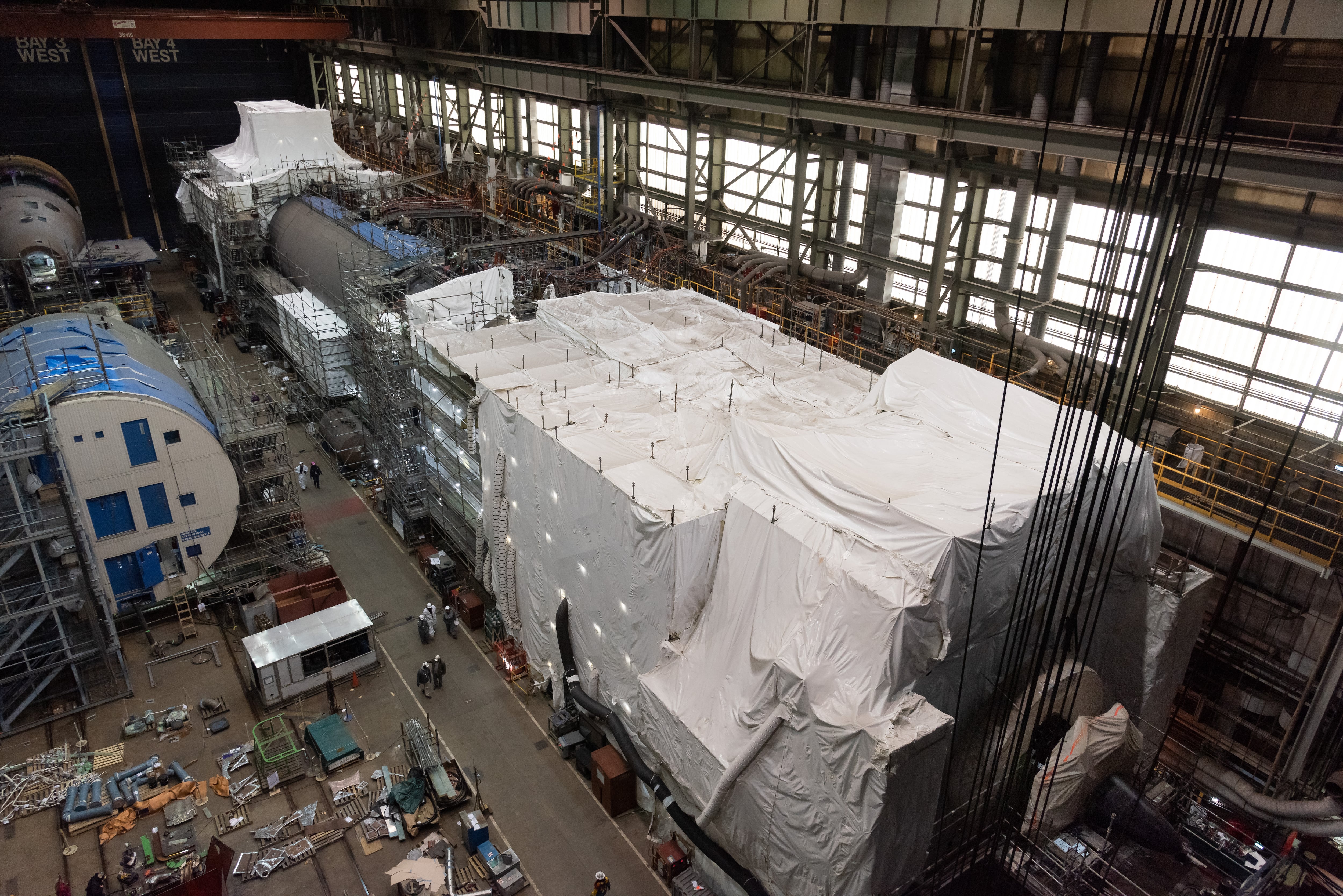WASHINGTON — The U.S. Navy needs $50 million in fiscal 2022 to get Virginia-class attack submarine construction back on track, after the coronavirus pandemic disproportionately hit that shipbuilding program, the service told lawmakers June 8.
The American submarine-industrial base in 2020 fell behind its required production rate of two Virginia subs per year plus work on the first Columbia-class ballistic missile submarine. Mike Petters, president and CEO of Huntington Ingalls Industries, said during a quarterly earnings call in August that its Newport News Shipbuilding yard in conjunction with the Navy decided to use limited labor resources during the early months of the pandemic to prioritize other projects — an aircraft carrier refueling and submarine repair work, in particular — and take the biggest hit on submarine construction.
But the Navy said during a Senate Seapower Subcommittee hearing that the FY22 investment will help it get back to building two Virginias and one Columbia submarine per year.
After building up to that production rate during 2018 and 2019, COVID-19 hit.
“So we kind of took a step back from that in 2020. We weren’t really producing at a two-per-year-plus-one rate,” Jay Stefany, the acting assistant secretary of the Navy for research, development and acquisition, said at the hearing. “But in the last six months I’ve seen that coming back; the industrial base is getting back to that cadence where they believe they soon will be at a two-plus-one … capability.”
The $50 million will fund “some infrastructure capabilities … that we found are a bottleneck and would be helpful to get to that two-Virginias-plus-one-Columbia rate,” Stefany added.
At issue is the fact that submarine construction rates will only need to go up from here. Industry, over the course of the Virginia program, had to ramp up from building one per year to two per year, which led to delays in delivering the Virginia Block IV sub. Today, industry is being asked to build two Virginias and part of one Columbia sub a year — the rate that industry was achieving before the pandemic.
Petters said during multiple earnings calls that workforce attendance hit a low of about 50 percent during the early days of the pandemic and settled at around 70-80 percent later in 2020, with employees not just out of work because they were sick or quarantining but also because they were tending to children or elderly parents at home, among other mitigating circumstances associated with the pandemic.
To keep up with demand, by FY26 the industrial base must be able to produce two submarines plus a full ballistic missile submarine each year, with the Navy planning to buy one Columbia sub every year from 2026 to 2035.

More challenging still is the notion that the Navy wants to increase its submarine production to three per year to build up its submarine inventory amid the growth of the Russian and Chinese navies. Former Defense Secretary Mark Esper rolled out a Battle Force 2045 plan in October, calling for three-per-year sub production to start immediately.
Stefany said achieving that output would take a significant investment.
“Right now, I would say the submarine-industrial base is in a place to do two Virginias plus a Columbia,” he said. ”Now, in the future, to get to three Virginias plus one, I don’t believe the industrial base right now can handle that. But we did a study. ... We’re looking at $1.5 to $2 billion of further investment by ourselves plus industry, and an increase in the workforce that would be necessary over a period of time to get to that state.”
Achieving three Virginia subs a year while maintaining Columbia construction would take “a major investment of effort, capital and workforce,” he added.
Still, the operational need is such that the Navy may have to look at making that investment — essentially the cost of a full submarine to shore up the industrial base so it can increase output rates.
During the hearing, Vice Adm. Jim Kilby, the deputy chief of naval operations for war-fighting requirements and capabilities, said the Navy’s submarine and undersea warfare ecosystem — which consists of submarines, P-8A Poseidon maritime patrol aircraft, underwater arrays and more — “is the best in the world, it is unparalleled.”
“We must preserve that. I think increasing the number of submarines is definitely a part of that, and we’ve got to get after what Secretary Stefany alluded to.”
Megan Eckstein is the naval warfare reporter at Defense News. She has covered military news since 2009, with a focus on U.S. Navy and Marine Corps operations, acquisition programs and budgets. She has reported from four geographic fleets and is happiest when she’s filing stories from a ship. Megan is a University of Maryland alumna.




